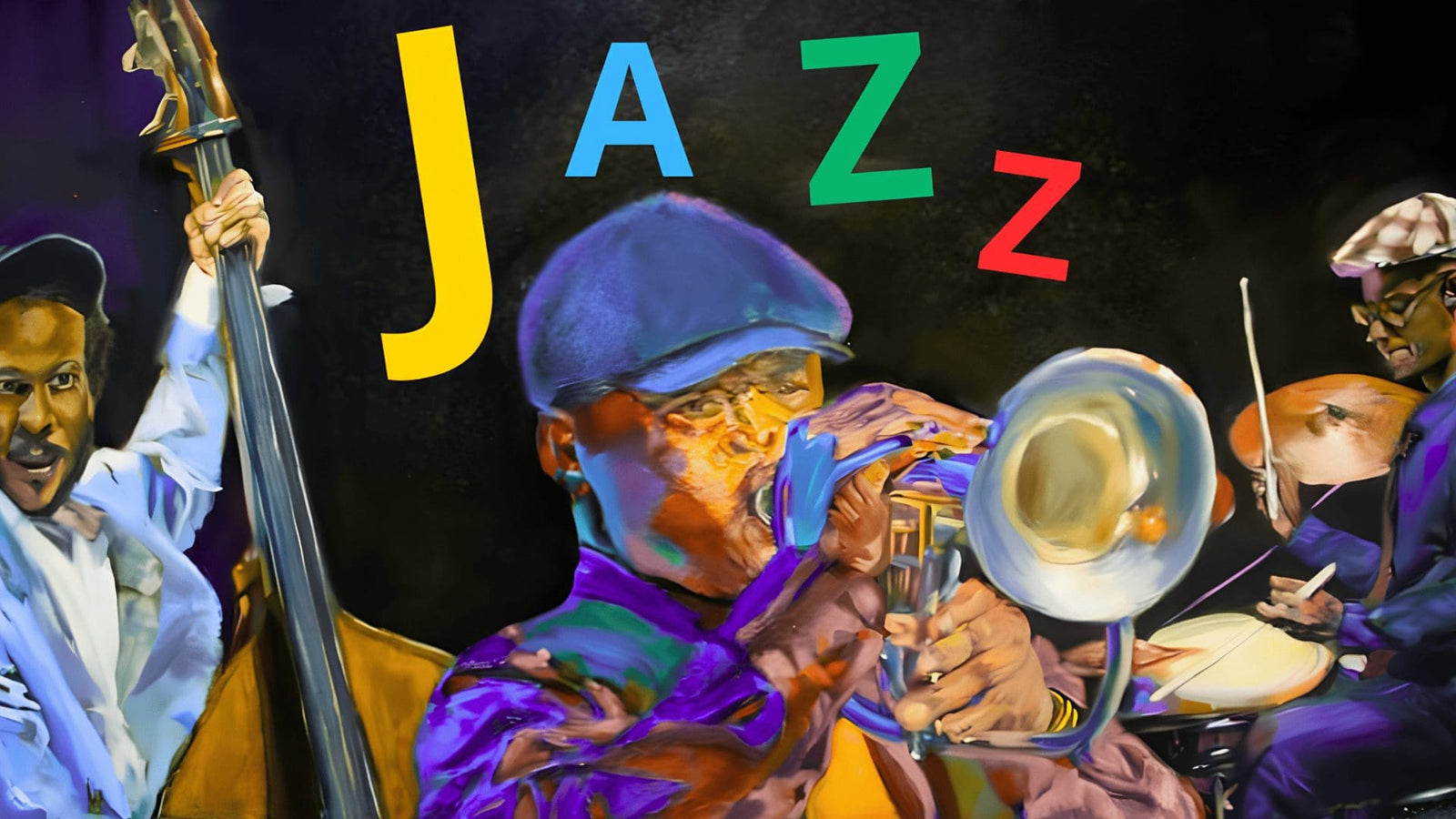Do you feel unsure and overwhelmed when thinking about jazz improvisation? No ideas where to start? In this article, we will share tips and practices to guide you in the right direction to master jazz improvisation.
What is Jazz Improvisation
Jazz improvisation is the act of spontaneous playing pieces that haven’t been previously planned and composed. It can be compared to a conversation when there’s a topic that you haven’t memorized well and then what you do is improvise. The same goes for music. You have the basic idea that you want to convey but you haven’t prepared it in advance and then you invent it in the process. Unlike in language where you have plenty of options, in music you have a few notes to use, which makes it easier to play something that makes sense.
Things You Should Know for Jazz Improvisation
There are a few rules that improvisers should consider. Anything that they play should be: in time, in tune and sound pleasing. Once you achieve it, you have the basic control of your instrument.
That means that to improvise you need to know two things:
-
what notes to play
-
what rhythm to choose
While the rhythm doesn’t pose a great challenge for beginners, the choice of notes seems to be more complicated.

Levels of Improvisation
Some experienced musicians divide improvisation in five sequential levels:
- Playing by ear. At this step, trumpeters, pianists, and other musicians rely 100% on intuition and may not know much about chords and music theory. This is the basic step for further progress. To develop this skill, musicians should listen to a lot of music of the chosen genre to understand what sounds fit and what don’t.
- Using ears, scales and keys. Musicians have an understanding that they can use one scale to guide their note choice during improvisation. It requires some knowledge of the music theory like knowing the basic scales — major and minor with their interval patterns. As a beginner you don’t need to know all of them — just select the one you need to improvise on a specific song.
- Chord Theory. At this step, musicians figure out what chords are played at specific moments and what kind of playing (arpeggio or scale) can fit best over them.
- Substitution. Musicians figure out substitution and alterations to add variety to their improvisations. They choose what kind of sound is appropriate for specific music.
- Tension and release. This level is highly intuitive and actually combines all previous four levels.
How to Improvise: Where to Start
As a beginner you may see jazz improvisation as something complicated, so let’s break it down into simple terms to help you work it out.
Common Jazz Progression
The chord progression Dm7, G7, Cmaj7, which is 2, 5, and 1 in the C major key is the most common jazz progression in jazz standards. This is what jazz musicians use to improvise. Actually they improvise by using different notes over the top of 2, 5, and 1. But what specific notes can you use?
When looking attentively, you will notice that Dm7 and G7 share the same notes within Cmaj7, where the latter is the key centre. It means musicians can play Cmaj scale over the top of 2, 5, and 1 chord progression, and none of those notes from the scale will sound wrong. You can try to check it out with your own brass or woodwind instrument.

Modes of Chords
However, the thing that makes jazz musicians sound great is their ability to make the chord progressions stand out. For this purpose, you will need chord modes. For instance, the mode for Dm7 is the Dorian mode, for G7 is Mixolydian mode, while for the Cmaj7 is Ionian mode. It may sound complicated, but all you need to do is play C major scale notes but starting and ending with the root note over each chord of the progression.
You should start playing the C major scale with D over Dm7, then starting with G over G7, and with C over Cmaj7.
Now when you’re trying to play it with your instrument, you will notice that the chord progression stands out better than when simply playing notes from the scale one by one. You still play the same scale and the same notes but you emphasize each chord by moving across different modes.
Selecting The Most Important Notes
The most important notes are always the chord tones. Since we use seventh chords for jazz, the root note for Dm7 is the first root note, the flat third note, the fifth, and the flat seventh, for G7 is the root, the third, the fifth, and the flat seventh, and for the Cmaj7 is the first, the third, the fifth and the major seventh.
In other words, every other note (the root, the third, the fifth, and the seventh) within the mode scales is the chord tone. So now, instead of playing each note of the mode, try to play chord tones over chord progression. You will notice it sounds much better than the previous two options.
But it still doesn’t actually sound like jazz. Why? It happens because jazz musicians use some secrets:
-
They use a chromatic scale.
-
They don’t play a chromatic scale like a scale.
-
They play notes from the scales that resolve melodically to the chord progression.
Try to identify the third tone notes of the previous example. It will be: F for Dm7, B natural for G7, and E natural for Cmaj7. When transitioning from one note to another, include half steps from the chromatic scales. When moving from F to B, use A#, when moving from C to E, include D#. This may sound simple, but actually it’s the important building block of understanding how jazz musicians approach improvisations.
How to Improve Your Solos
One common problem of many students who learn to play jazz is that they play chord tones and notes that belong to the scale, but they don’t actually connect musically. As a result, they don’t have a melody.
Here’s an exercise to help you fix this problem by not only making a solo but coming up with a melody, unlocking the potential of melodic playing. It includes a few steps:
1. Singing before playing
Select a medium tempo 1, 2, 3, 4. You can pick any phrase for singing. For instance, just a simple I love you my darling. Now sing or talk the phrase while tapping the rhythm with your fingers. You may also include extra words at some moments. Don't be afraid to be repetitive from the start.

2. Adding pitches
Select your backing track. Get inspired by jazz vocalists’ singing style to create a new melody. Play the backing track and sing the line from the previous step. Record yourself to see what you do.
3. Identify places that sound wrong
Select the notes that provide a feeling like you can’t land yourself. It’s where you don’t have a solid connection to music. You don’t need to be a good singer to feel it. The truth is that you can’t do a solo on your instrument if you can’t do it with your voice. You can fit the notes into the chords and make them sound great even if they don’t fit them but only once you hear and sing them clearly.
Now go to your double bass or any other instrument and do everything with it that you already did with your voice. It will be much easier since you have singing in your head.
How to Improve Your Improvisation Skills
Now let’s explore some tips to become a better improviser with your everyday practice.
- Include guide tone lines in your warm-ups. Guide tone lines are standard harmonic progressions, where a melodic line runs between each chord by using scale degrees 3 and 7. By including them, you can not only warm up your muscles but also build the mindset suitable for improvisation.
- Play scales over a whole range of your instrument. Don’t limit your playing only to one octave. Improvisers use the full range of the instrument from lower notes to higher ones.
- Repeat what you learned. Remember about the forgetting curve, which says that the next day you will forget 60% of the material, which you learned yesterday. That’s why every day you need to start your practice with what you’ve learned to refresh it in your mind. The more repetition you do, the more material you remember.
- Practice slowly to make no mistakes. Otherwise the brain will remember the wrong places and it will be difficult to break the habit of playing wrong.
- Record yourself. This helps you see where you sound pleasing as well as work on things you don’t like.
- Set realistic goals. Focus on things that you can reach. Start with setting a goal of practicing playing 4 days per week and stick to it.
- Stop practicing at the best moment. When you stop playing when it’s fun, you will be looking forward to it the next day, which makes practicing more satisfying. Never stop at the moments when you’re feeling exhausted or nervous.
- Transcribe your favourite jazz solos. It’s an awesome way to understand phrasing, chords, and techniques while having fun. By transcribing solos from your favourite pieces you also train your ear.
- Don’t forget about the metronome. Practicing with a metronome helps you build a sense of time, which is essential for good phrasing and timekeeping.
- Practice over different keys. This will help you train your skills of improvising over different chord changes with more confidence. Use backing tracks or songs to improvise in the musical context.
- Listen to music. Nothing inspires more than jazz greats. Pay attention to their techniques and approaches. Let your favourite jazz songs become a source of ideas for your own improvisations.

Conclusion
Jazz improvisation can be a challenging task for beginners at first glance, but it’s entirely achievable. By approaching it step by step, figuring out the common chord progressions, tones, and modes for each chord, you can easily improve your improvisational skills and make each note sound appropriate.
Learning improvising isn’t possible without well-trained ears. Check out our article on How to Develop Ear Training Skills: Tips for Musicians to grab some insights.
Discover a wide range of musical instrument accessories for jazz players available as single items and bundles at affordable prices.



 https://kgumusic.com/pages/about-us
https://kgumusic.com/pages/about-us